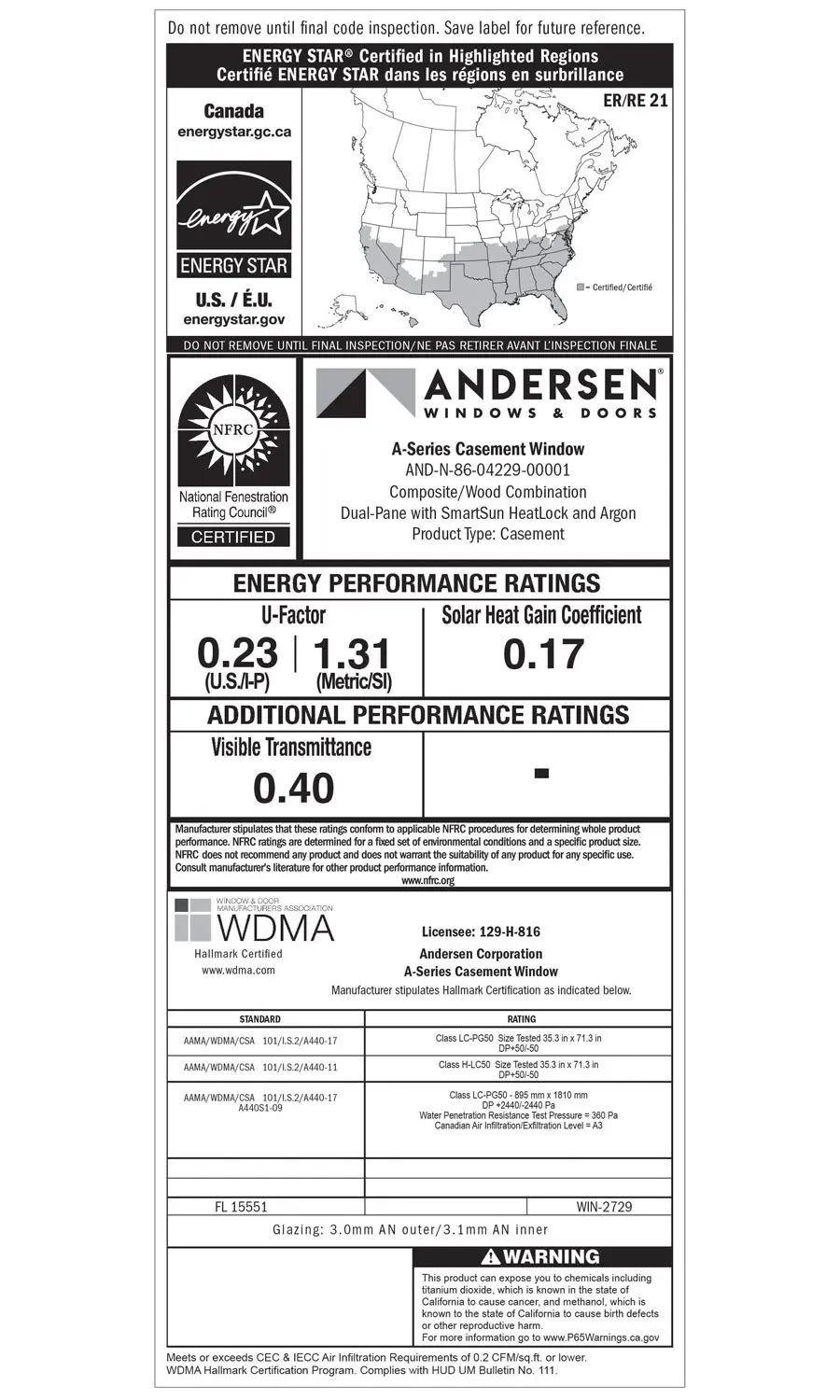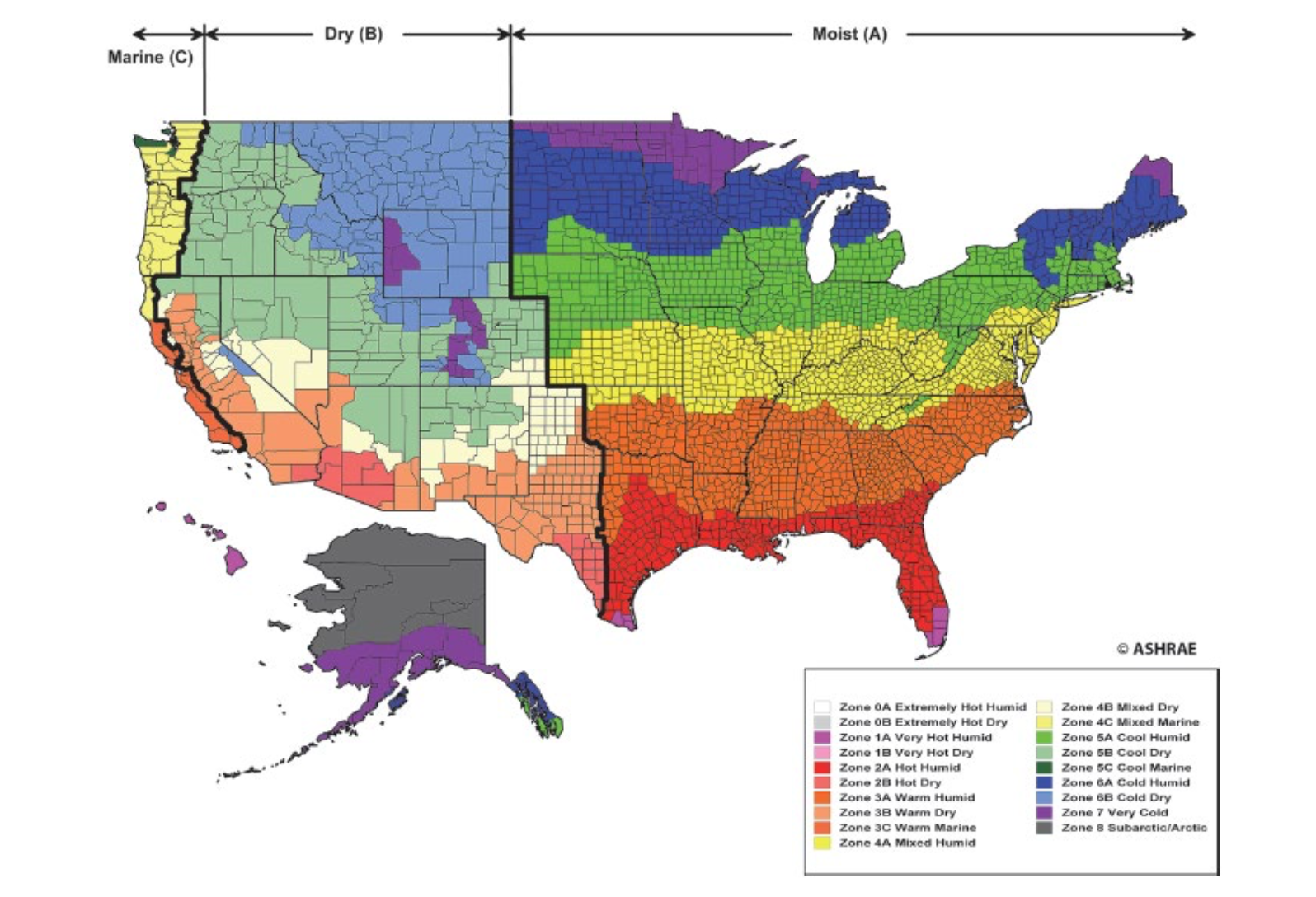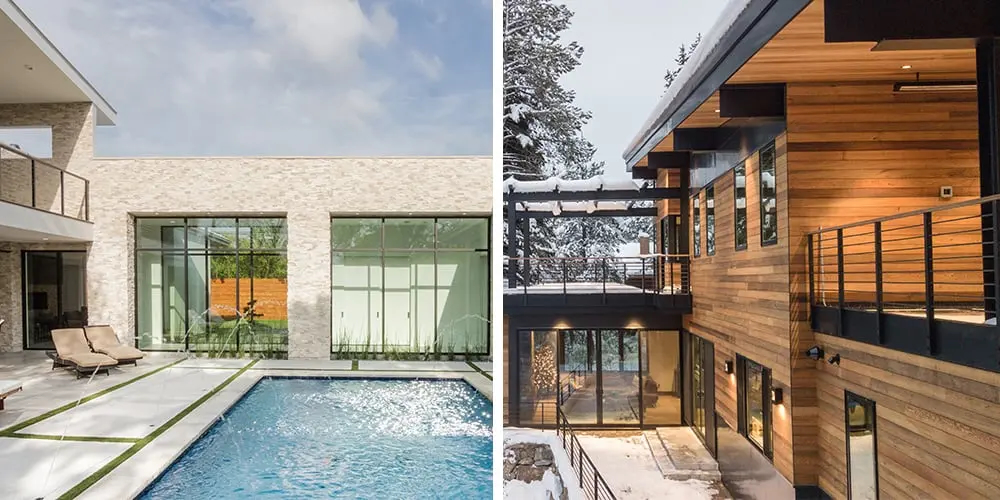Randy Williams got his start in residential construction in the mid-1990s, working with his brother on electrical, plumbing, and HVAC systems. He later branched into home building and renovation, and by 2005, he was a full-time general contractor, founding Willcon, Inc. with his father and brother. In 2009, he became an energy auditor, and he is currently involved in designing energy-efficient homes.
We spoke to Randy to get an understanding of window selection based on climate, including what should be taken into account when building in either a warm or cold environment.
Let’s start out with an overview of building codes based on local climate. How is that measured?
ASHRAE, the American Society of Heating and Air Conditioning Engineers, has developed a map of climate zones that’s incorporated into the International Residential Code (IRC). It’s based on a lot of climate data and categorizes U.S. counties into specific zones using that information.
There are two main metrics you should be aware of when choosing windows: Solar Heat Gain Coefficient (SHGC), which is important in warm climates; and the U-factor, key in cold climates. The window’s label will have these values clearly displayed.

The SHGC values range from 0 to 1, and are expressed in two-digit decimal fractions. This number measures how much solar gain is generated by light shining through the window. The lower the number, the less the heat gain, so lower numbers are better in warm climates.
The U-factor expresses the rate of heat loss. These values also range from 0 to 1 and are expressed as two-digit decimals, so the lower the number in a cold climate, the better the window will be at preventing heat in the interior of the home escaping to the outside.
What are the main considerations when choosing windows in a warmer climate?
Climate zones 0 to 3 span most of the southern part of the U.S. (including large portions of North Carolina, South Carolina, Georgia, Florida, Alabama, Louisiana, and Texas) all the way west to parts of Arizona and California, with some scattered counties in other neighboring states. In these zones, the SHGC measurement must be 0.25 or less. In zones 4 and 5, primarily situated in the middle part of the country, the SHGC measurement doesn’t have to be so strict, so we’re looking at 0.40 or less there.
For any home located in colder climates, which comprise zones 6, 7, and 8, there’s no SHGC requirement. In fact, in these areas, solar gain might be useful to help heat the home in the winter.

How do window manufacturers ensure that the SHGC criteria are met?
A lot has to do with the glass that’s used. Low emissions (Low-E) glass coatings applied during Andersen’s manufacturing process go a long way toward insulating the home against heat intrusion. Frame construction is also important. Most Andersen windows are made with what we call “thermally broken” window frames, meaning that none of the exterior portions of the window are continuously attached to the interior of the home, preventing thermal transfer by the frame.
Of course, correct installation is also essential during the process of connecting the thermal control layers to the window, so working with a professional installer is key to getting the best performance.
Turning to colder climates, what are the concerns there?
The U-factor, which measures the window’s tendency to lose heat, should be lower for areas that get the coldest. The IRC doesn’t specify a value in zones 0 and 1, which, as we’ve mentioned, are in the hottest part of the U.S., specifically the southernmost tip of Florida. In zone 2, which includes the rest of Florida and parts of Georgia, Alabama, Louisiana, Texas, southern California, and Arizona, the U-factor requirement is 0.40 or less.
In the coldest areas, which are climate zones 3 through 8, the U-factor should be 0.30 or lower. This is actually most of the U.S., extending from northern Minnesota and the Dakotas all the way down to parts of California, Texas, Georgia, Alabama, and more.
If you’re thinking that there’s overlap in what’s considered hotter and colder in most of the country, you’re correct. That’s because these states are subject to more extremes in temperature throughout the year. In those areas, you’ll need to spec for both the U-factor and SHGC when selecting windows in order to meet the required energy performance levels.
What considerations are key for windows with lower U-factors?
Low-E glass is also important here. It reflects away heat in the summertime and keeps the heat inside in the wintertime. Dual pane glass is standard on Andersen windows, but for the greatest degree of insulation, triple pane is the glass of choice. These options are available on several of Andersen’s window lines.
And again, a thermally broken frame and proper installation are also key considerations.
Anything else we should know?
There’s the matter of condensation. If water beads up on the outside of the window in a warm climate, it’s not really an issue. It’s normal because the glass is cooler than the hot, humid air outside, and in fact, indicates that the window is doing its job. Interior condensation is a bigger problem, though, and can mean that the humidity inside the home is too high. Again, Low-E glass and triple pane windows can help mitigate this problem. Adjusting the interior humidity can also help. This guide from Andersen offers some tips about moderating the humidity level.
Overall, window selection makes a big difference when it comes to performance, so it’s essential to choose them carefully based on the local climate.
For more information, visit andersenwindows.com.








